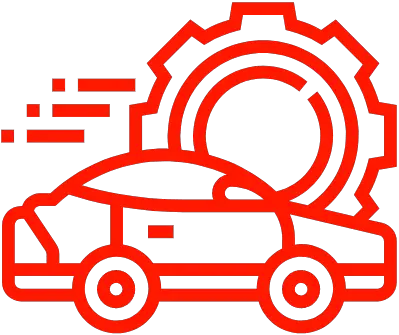How to Diagnose and Fix Ford Escape Error Code P0234
Ford Escape Code P0234 is an engine diagnostic code indicating a problem with the engine’s turbo or supercharger system. This code is triggered when the Engine Control Module (ECM) detects that the input signal from the boost pressure sensor is out of range or not responding correctly. This code can be caused by a variety of issues, including a malfunctioning boost pressure sensor, an exhaust leak, or a faulty wiring harness. In some severe cases, it may require replacement of the turbocharger or supercharger unit.
Automobile: Ford Escape Code P0234
P0234 is a diagnostic trouble code (DTC) for a generic powertrain code related to turbocharger or supercharger boost, indicating the engine control module (ECM) has detected an excessively high input. This code is most commonly found in vehicles with turbocharged engines, as these types of engines rely on boost pressure to increase power output.
Overview
P0234 is a generic OBD-II code which indicates that the Engine Control Module (ECM) has detected that the intake manifold pressure (or mass air flow) is too high. This code may also be triggered by other mechanical issues such as low oil pressure or a faulty boost sensor. The most common cause of this code is an issue with the turbocharger system, such as a blocked or leaking wastegate, or a faulty turbocharger bearing or seal.
Troubleshooting Tips
When diagnosing this code, it is important to first check for any other codes that may be present in addition to P0234. If any other codes are present, they should be addressed first before attempting to diagnose P0234. Additionally, it is important to note any symptoms that the vehicle may be exhibiting such as poor performance, lack of power, and poor fuel economy.
Next, it is important to inspect all related components of the turbocharger system for any signs of damage or wear such as loose clamps, leakage from hoses or seals, and cracked hoses. Additionally, all fluid levels should be inspected and topped off if necessary.
Finally, it may be necessary to use a scan tool to monitor real-time data while driving the vehicle in order to identify if there are any issues with boost pressure or air flow that are causing this code. If everything appears normal on the scan tool data then further testing may need to be done with specialized equipment in order to properly diagnose this issue.
Common Causes Of The P0234 Code
The most common causes of this code include faulty wastegates or boost sensors; leaking hoses; blocked intake manifolds; worn out bearings and seals; and low oil levels. Additionally, there may also be an issue with the ECM itself which could cause this code to appear. In some cases an aftermarket exhaust system can cause back-pressure on the engine which can result in this code being triggered by the ECM. It is important to thoroughly inspect all components of the turbocharger system before concluding that there is an issue with the ECM itself.
Ford Escape Code P0234
The Ford Escape is one of the most popular SUVs on the market today. Unfortunately, it can also be prone to issues with its engine, particularly the dreaded P0234 code. This code indicates an overboost condition, which means that the turbocharger is spinning faster than it should be and is creating too much boost pressure in the engine. This can lead to a variety of problems such as decreased fuel efficiency, poor acceleration, and even engine damage if left unchecked. Luckily, there are several ways to diagnose and fix this issue on your own if you know what you’re doing.
Diagnosing Ford Escape Code P0234
The first step in diagnosing this issue is understanding what causes it. The most common cause of this code is a faulty or leaking turbocharger wastegate solenoid or actuator. The wastegate solenoid controls how much air enters the turbocharger and therefore determines how fast it spins. If the solenoid fails or has a leak, it can cause the turbocharger to spin too fast and create too much boost pressure. Other possible causes include a faulty or blocked air intake system, an exhaust system that doesn’t allow enough air to leave the engine, or worn out engine components such as spark plugs or fuel injectors.
Once you’ve identified what might be causing your overboost condition, you’ll need to take steps to diagnose and fix it. This will involve testing components like the wastegate solenoid, air intake system, and exhaust system for leaks or blockages that could be causing your problem. You’ll also need to check all of your engine components for wear and tear that could be reducing their performance and leading to an overboost condition. Finally, you may need to adjust certain settings on your Ford Escape’s computer in order to restore proper boost levels.
Avoiding Costly Repairs
Once you’ve diagnosed and fixed your Ford Escape’s overboost condition, there are a few things you can do in order to avoid having similar problems in the future. One of these is regularly checking your vehicle for signs of wear and tear such as oil leaks or worn out spark plugs that could lead to an overboost condition again down the line. You should also pay attention to any warning lights or messages on your dashboard that indicate a problem with your engine or other components so that you can take action before things get too serious. Finally, make sure you follow all manufacturer recommended maintenance schedules so that your vehicle runs at its best for as long as possible without any major issues cropping up along the way.
Ford Escape Performance Enhancements
If you want to get even more power out of your Ford Escape then there are several ways that you can do so without risking any further damage from an overboost condition. A good place to start is by upgrading some of its key components such as its air intake system which will allow more air into its engine for improved performance and fuel economy alike. Replacing certain parts such as its exhaust system with ones designed specifically for faster flow will also help increase power output while maintaining proper boost levels at all times. Finally, installing a cold air intake kit will give your vehicle even more power by allowing colder air into its combustion chamber where it can work more efficiently than hot air from outside temperatures would otherwise allow for improved performance overall without risking any further damage from an overboost condition..
Ford Escape Fuel Economy Tips
Finally, if improving fuel economy is one of your main goals then there are several steps you can take towards achieving this end without risking any further damage from an overboost condition either. One of these steps involves optimizing tire pressure levels so they always match up with what they should be according to manufacturer recommendations; this helps reduce rolling resistance when driving which improves both performance and mileage alike while avoiding any risk of overheating due to increased boost pressure levels from an overboosted scenario like we mentioned earlier on in this article.. Additionally, paying attention when driving by avoiding rapid acceleration whenever possible will help improve fuel economy significantly while making sure not too much oil is being used at once by checking oil levels regularly are two other helpful tips towards achieving better mileage numbers overall with no risk whatsoever of running into any sort of trouble due to an overboosted situation either!
FAQ & Answers
Q: What is P0234 code?
A: P0234 is an OBD-II generic code which indicates that the Engine Control Module (ECM) has detected that the turbo/super charger boost control circuit has exceeded its specified range of operation.
Q: What are the troubleshooting tips for P0234 code?
A: Common diagnostic trouble shooting tips for this code include checking the turbo/super charger waste gate, checking the vacuum system, resetting the ECM and replacing any faulty sensors or actuators.
Q: What are some maintenance requirements for a Ford Escape?
A: Regular maintenance for a Ford Escape includes changing the oil, rotating and balancing tires, inspecting brakes and other parts, replacing air filters and spark plugs, and flushing brake fluid every two years.
Q: How can I improve my Ford Escape’s performance?
A: To improve your Ford Escape’s performance, you can upgrade its air intake system, replace exhaust system components, install a cold air intake kit, and recalibrate the ECM for better fuel economy.
Q: What are some fuel economy tips for my Ford Escape?
A: Fuel economy tips for your Ford Escape include optimizing tire pressure levels, using synthetic oil in place of conventional oil, driving at a steady speed instead of accelerating quickly or braking hard, and avoiding carrying unnecessary weight in your vehicle.
The Ford Escape P0234 code is a common problem that can occur with the vehicle’s turbocharger. This code indicates that the vehicle’s turbocharger is not operating correctly, resulting in either an overboost or underboost of the engine. In order to remedy this issue, it is necessary to inspect the turbocharger and its related components for any signs of damage or wear. If necessary, replacement of the turbocharger or its associated components should be considered. Additionally, if the issue persists after replacing faulty components, further diagnosis may be necessary to determine the source of the problem.
Author Profile

-
With more than 30 years in the bicycle industry, I have a strong background in bicycle retailing, sales, marketing and customer service. I have a passion for cycling and a dedication to excellence. As a manager, I worked diligently to increase my capabilities and responsibilities, managing up to eleven mechanics (at Palo Alto Bicycles) and later as a working partner in my own store.
As the shop owner of Spoke n’ Word Cycles in Socorro, NM, the success of the mission was my responsibility, which I pursued passionately since we opened in 2003 through the spring of 2011. I am adept at managing owned and loan inventory, preparing weekly & annual inventory statements, and managing staff. The role as managing partner also allowed me tremendous freedom. I used this personal freedom to become more deeply involved in my own advancement as a mechanic, to spearhead local trail building, and advocating for cycling both locally and regionally.
As a mechanic, I have several years doing neutral support, experience as a team mechanic, and experience supporting local rides, races, club events. I consistently strive to ensure that bicycles function flawlessly by foreseeing issues and working with the riders, soigners, coaches and other mechanics. Even with decades of experience as a shop mechanic and team mechanic, and continue to pursue greater involvement in this sport as a US Pro Mechanic, and UCI Pro Mechanic.
Latest entries
- July 26, 2023BodyFind the Best Grill for Your 2007 Toyota Tacoma – A Complete Guide
- July 26, 2023BodyUpgrade Your Ford Escape with the Best 2008 Grill – Here’s How!
- July 26, 2023Bumper Stickers, Decals And MagnetsBest Chevy 1500 Door Emblem: Upgrade Your Truck with a Stylish Emblem
- July 26, 2023Marker Light AssembliesGive Your 2008 Dodge Dakota a Makeover with the Best Grill Upgrade

